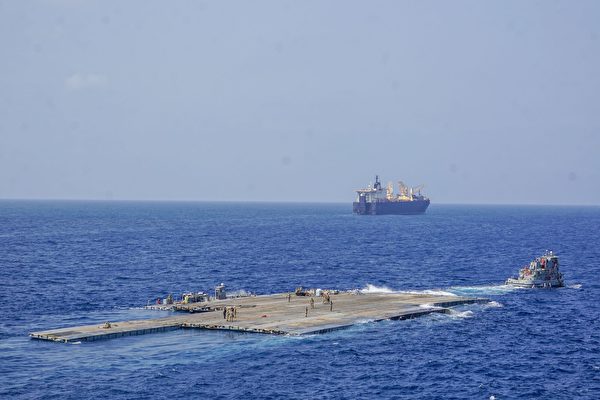The Biden administration has spent two months and $320 million to build a large temporary floating dock in order to deliver humanitarian aid to Gaza. According to a news release from the US Department of Defense on Thursday, the floating dock installation was completed earlier in the day. A huge metal floating dock and a long narrow causeway have been inserted into the beach in northern Gaza.
The delivery of aid supplies will begin steadily to ensure the smooth operation of the system. The transportation volume will increase rapidly from about 90 trucks per day to around 150 trucks per day, providing approximately 2 million meals per day.
Furthermore, US military personnel will not enter the Gaza Strip. The US military is closely coordinating with Israel to ensure the safety of ships and beach workers. Trucks carrying aid supplies are expected to start landing in the coming days. The United Nations will be responsible for receiving and coordinating the distribution of aid supplies.
According to the Associated Press, Nadav Shoshani, an international spokesperson for the Israel Defense Forces, confirmed that the dock has been installed. Israeli engineering units have leveled the surrounding areas and laid roads for trucks.
The Israeli military will be responsible for coastal security, but there are also two US Navy warships (the USS Arleigh Burke and the USS Paul Ignatius) patrolling near the coast.
Last week, a ship loaded with food set sail from Cyprus, and the goods have been unloaded onto the USS Roy P. Benavidez anchored off the coast of Gaza. This week, up to 500 tons of food will arrive on the Gaza coast.
According to the new maritime route, humanitarian aid supplies are first transported to the port of Larnaca in Cyprus. They are then loaded onto a ship and transported approximately 200 miles to the large offshore floating platform built by the US military off the coast of Gaza.
Here, the pallets will be loaded onto trucks, taken to smaller military ships, and shuttled about 3 miles to the floating dock connected to the beach by the causeway. The trucks will continue along the causeway to enter the safe area on land, where they will unload the aid supplies before immediately turning back to the ship.
Israel has recently intensified its efforts to provide land assistance, opening new overland routes for aid trucks and accusing Hamas of disrupting the flow of goods with a series of attacks on the main Kerem Shalom crossing.
In order to prevent military aid from falling into the hands of Hamas, these aid supplies are inspected by the military in Cyprus before being transported to Gaza, and they must undergo another inspection at an Israeli land checkpoint after leaving the dock.
Israel has accused Hamas of hijacking aid supplies, but Hamas has denied it despite online videos showing armed personnel seizing humanitarian aid trucks in Gaza. Israel claims that the Rafah operation aims to destroy the remnants of Hamas forces in southern Gaza and dismantle the military facilities of the terrorist organization.
CNN reported last week that even with the floating dock in operation, weather and sea conditions will severely limit its capabilities. The United Nations stated on Thursday that overland transportation of aid supplies remains the “most practical, effective, and efficient” method.

